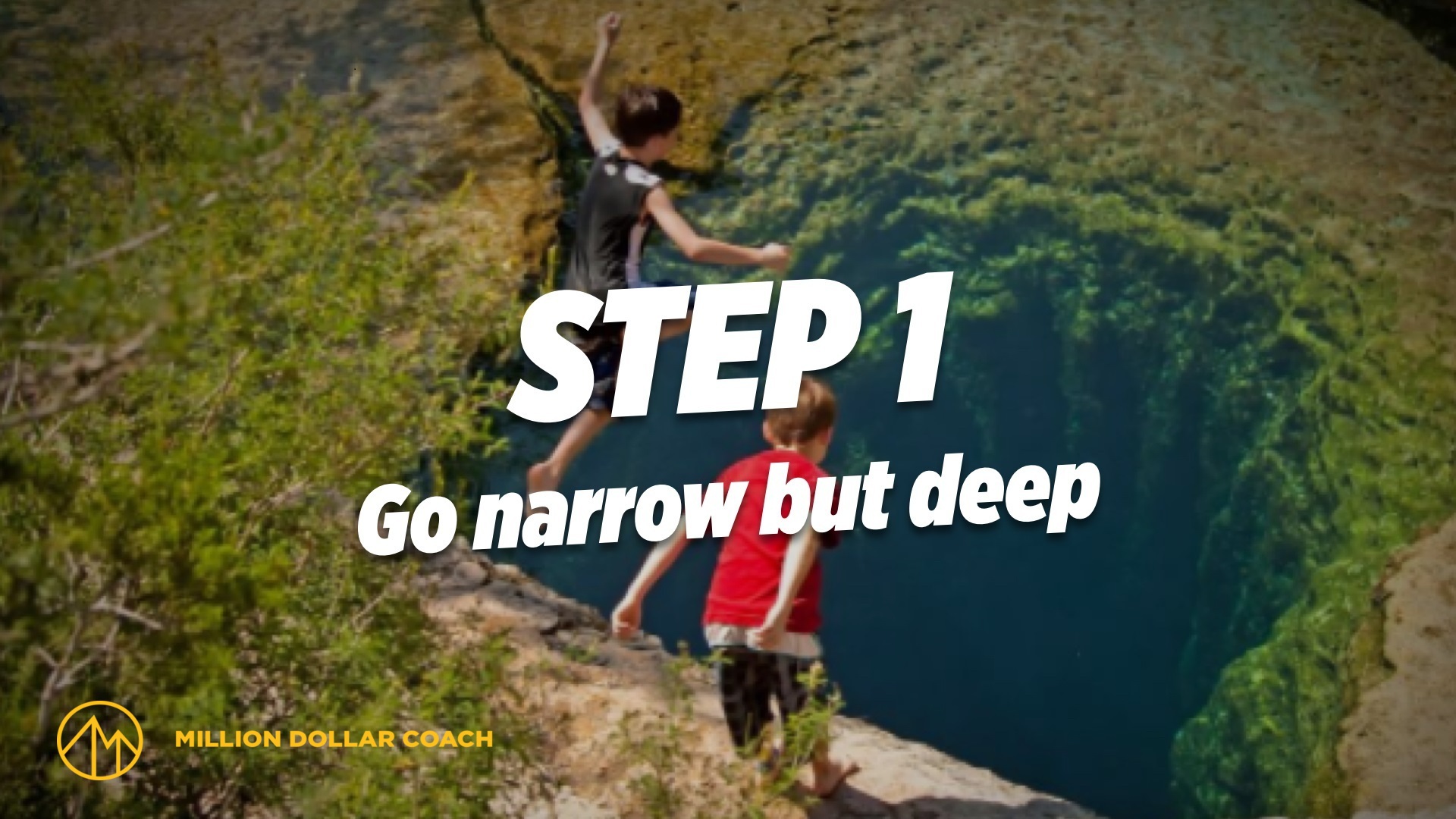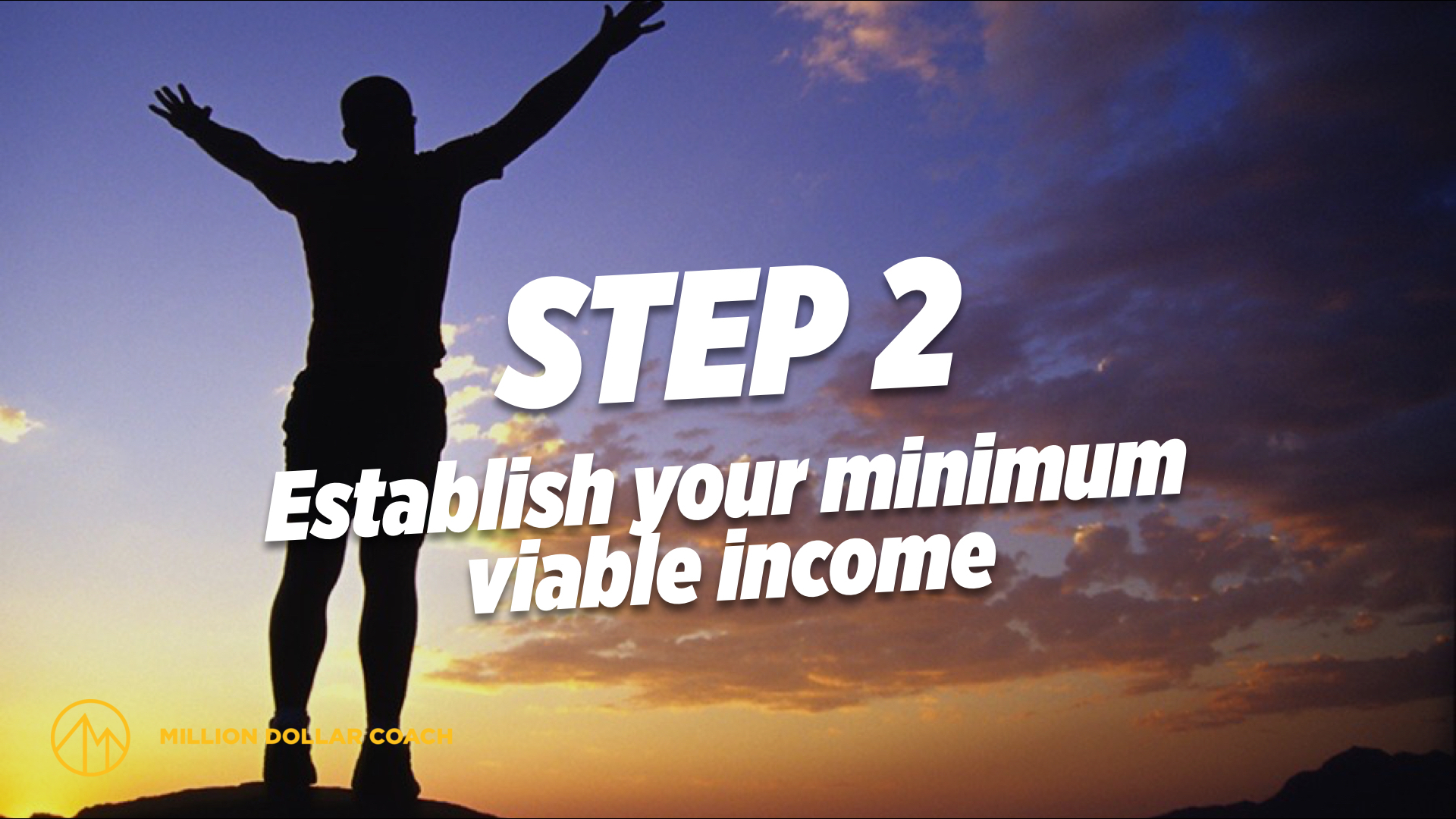=============================================
NOTE:
This article is 1,503 words. If you want the simple read-on-the-go PDF, you can get it for free .
Just click here.
===============================================
You want to scale your impact and income, but there’s just not enough time in the day to serve more clients. Unless human cloning goes mainstream soon. 😉
Your one-on-one work with clients may have been a lucrative source of income for you and a wonderful way to enable clients to transform their lives. But given the size of your vision, it just isn’t going to cut it anymore.
What if you could take your expertise and offer life-changing training to clients outside your current network? One of the top strategies here at Million Dollar Coach is Unpack IP; your intellectual property.
And—better yet—what if you could do it in a way that you’re earning recurring income, even while you sleep, travel, or care for loved ones?
Danny Iny says all that is possible when you turn your coaching practice into an online course empire. He knows because his company, Mirasee, has helped thousands of people do just that, and many of them are coaches. This post continues in Danny’s own words.

Go Narrow, But Deep
Because there’s so much you can teach, and you’re used to creating in-depth transformations with your clients, you might be tempted to make your first online course the perfect course, with everything the student could ever possibly need to get the transformation they want.
Unfortunately, that wouldn’t get you very far.
You would have to spend months to put together such a course. In the meantime, you wouldn’t be getting paid for it. And in the end, you might have created something people don’t want to pay for.
Besides, an all-included, super-comprehensive course many not be the best thing for your learners. They could get overwhelmed and unable to use it.
The best way to get started in online course building is to put out a first test course, or what we call a “pilot.” In the entertainment industry, a TV series begins with a pilot episode. Producers use it to bring their concept to life (because sometimes ideas look better on paper than in reality), gauge the audience’s response to it, and convince a TV network to invest in the program.
A pilot course performs a similar function. It allows you to gauge your prospective students’ interest and lets you bring your course idea to life—and get paid for while you’re at it.
As a coach who’s been helping clients transform their lives, you have an overabundance of possible topics for your pilot course. You can and should narrow it down by figuring out what your minimum viable outcome is.
Your minimum viable outcome will ensure that you’ve got an achievable, yet valuable, offer for your potential students. It will also give you a chance to test the main idea behind what will eventually become your full course.

Establish Your Viable Outcome
#1: Determine your course outcome.
Think about what kind of result or transformation you’d like to deliver with your full-blown course.
What are the mental “before” and “after” pictures that you have when you think about your students’ progress from start to finish?
If everything went swimmingly and your ace student had a perfect experience, what would the end result be? What would they have gained?
Try to include one big, overarching result, and then work to add various ways it will in influence your student’s life for the better.
For example, if you want to create a course that teaches consultants how to raise their rates, here’s how that might look like….
Big, overarching result: On completion of the course, students will at least double their hourly and per-project fees.
What it will mean for them: Working fewer hours but making more money, having higher-caliber clients they enjoy working with, more time to devote to their family, travel, close friends, etc., sense of confidence and pride that comes from increasing their professional value, etc.
#2: Work backwards toward the ideal minimum.
Now that you’ve fleshed out your ideal transformation, it’s time to work backwards until you come to the very first milestone or “big win” your students will experience.
You want to find an outcome that’s achievable in the short term, but still makes enough impact on your students’ lives to make it meaningful and valuable to them.
For instance, staying with our earlier example, your minimum viable outcome for consultants who want to raise their fees might be helping them negotiate a higher hourly rate with their existing clients. Even a 10-20% bump would feel incredibly meaningful and empowering. Therefore, your minimum viable outcome could be: At the end of the course, students successfully negotiate at least a 10% increase in their rates with existing clients.
#3: Condense and concentrate your material.
When you figure out what that first milestone is, ask yourself these questions:
- Can you deliver the material leading up to that milestone in 4 weeks or less (the duration of your pilot course)?
- What would you say to your potential student if he or she were seated next to you on a 2-hour flight? What would you cover, and what could you teach them before the plane lands, that will get them to the minimum viable outcome? What are the most vital pieces of information they’d need to have the best chance at success?

Test Your Idea In Real Life
You might not feel so sure about how to market your minimum viable outcome to potential students and enroll them successfully. That’s understandable. After delivering deep, meaningful transformations for your clients, it just doesn’t feel right to build a course that delivers a minimum, rather than a maximum.
But remember, the minimum viable outcome is for your pilot course. It’s just the first “episode” in what will hopefully be a long-running and profitable blockbuster of a course.
In the meantime, go ahead and make a bare-bones curriculum for your pilot course. By this I mean no more than a one-page outline, where each module is an item and each lesson is a bullet point.
Believe it or not, this is all you need to sell your pilot course. And if you’ve read your prospective students correctly, then you shouldn’t have a problem filling the seats.
Don’t over-prepare for your pilot course. I recommend delivering it live through video conferencing, so you can see your students’ body language and get their feedback in real time.
All you have to prepare for each lesson is a one-page outline at the most. Half a page of bullets is plenty, because remember, this is your subject matter, your area of expertise. You know this stuff! You can just go ahead and talk and deliver it from the bullets, and you’ll be fine.
On the other hand, if you create a more detailed outline, or even slides and an entire script, you’ll have a hard time deviating from it. That means, you can’t be as responsive as you need to be to your pilot students.
Until you actually deliver the pilot, you don’t know where they’re going to get stuck. Often, it will surprise you. Many of our students and clients have said, “I know you say I don’t need a detailed outline, but I feel like I need it anyway so I’m going to do it.” They soon find out it was a mistake.
One student, for example, planned a four-week course and wrote a detailed script for every lesson. As she delivered the first one, her students freaked out; they were overwhelmed. She discovered that she had to throw out the next three lessons, take that first script, and break it into three parts. So, what was previously the first lesson became the entire pilot course.
The point of a pilot course is to deliver it and learn from the experience. This is where you co-create the course with your students, because their feedback guides your decisions about what to include, how to deliver the content, and how to support your students so they accomplish the minimum viable outcome you promised.
You look at the trends: Where are people successful? Where are people having challenges? What questions come up a lot? What are you teaching that might seem crystal-clear to you but confuses many of your students? What have you included that isn’t relevant in most of their situations?
Once you feel that the course can get people where they want to go, you codify it, and then you sit back and let people enroll and pay you money. You keep working with them, supporting them, and keeping track. That’s why, although the income may be recurring, it isn’t entire passive.
Lather, rinse, and repeat. And if you want, you can follow the same process over and over again to build your personal online course empire.
Does the prospect of being an online course creator excite and inspire you? What do you feel prompted to do right now, as a result of reading this post?
# # #
Danny Iny is the founder and CEO of Mirasee, host of the Business Reimagined podcast, and best-selling author of multiple books, including Teach and Grow Rich: The Emerging Opportunity for Global Impact, Freedom, and Wealth. Get Danny’s Course Builder’s Blueprint here.



Leave a Comment